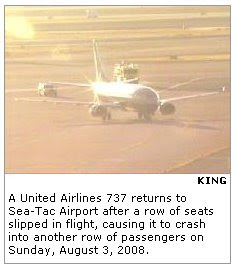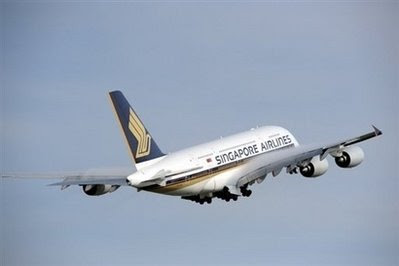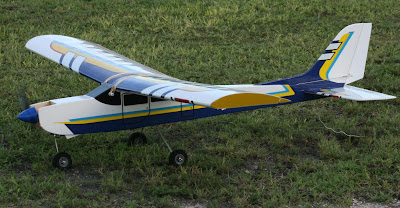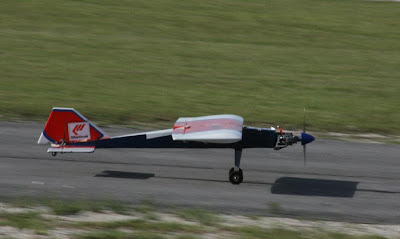
We love all that flies.
-Those Fantastic Flying Machines-
NEWS AND ANNOUNCEMENTS
Search This Blog
Some links may have expired
Ghetto List
Sunday, August 31, 2008
Bristol 175 Britannia 324
Oxygen Bottle Ruptured Qantas 747
Failure of an oxygen bottle caused the fuselage rupture of a Qantas Boeing 747-400 on July 25, say Australian accident investigators, confirming early suspicions.
The event appears to have been unique in commercial aviation history. More importantly, the Australian Transport Safety Bureau (ATSB) has no idea how it can be prevented from happening again—particularly since the bottle fell into the sea and therefore cannot be examined.
“There’s nothing at this stage that the ATSB can identify that could have been done to prevent this,” says investigator Julian Walsh. “We don’t really know why the bottle failed. That’s the key question for the investigation.”
Although the bottle blasted into the cabin, no one was hurt in the incident, which occurred at 29,000 feet. The flight crew reacted within 20 seconds of the depressurization warning by reducing thrust on all engines and extending the speed brakes for a descent to 10,000 feet. They called “mayday” on the regional air traffic control frequency, dumped excess fuel and approached and landed visually at Manila without further incident.
“The flight crew reported that many system failure messages were displayed, including all three instrument landing systems, the left VHF omnidirectional radio-range navigation instrument, the left flight management computer and the aircraft anti-skid braking system,” the bureau says in its preliminary report.
Early accounts seemed to suggest that the main part of the bottle, number four in a row of seven in the cargo bay just ahead of the right wing root, had blasted down and out of the fuselage while the valve at the top had shot up into the cabin.
The bureau’s preliminary report now makes clear that discharge from the lower part of the bottle blew open the fuselage and propelled the main part of the bottle upward. The bottle burst through the main deck, making a hole 20 centimeters (8 in.) in diameter, then hit a door frame, a door handle and the overhead paneling before falling back out of the aircraft, leaving parts of the valve behind.
The implication is that, by a stroke of bad luck, the bottle had managed to escape through the two holes it had already made and then dropped into the sea—and is therefore unavailable for inspection.
The first officer’s aileron cables were severed in the incident, but the captain’s cables on the other side of the aircraft (the left side) were not. “Numerous electrical cables and cable bundles, routed through the lower aircraft fuselage near the point of rupture, had sustained damage or been severed by the rupture event,” the bureau added. “Approximately 86 discrete conductors from six separate bundles had been affected.” [Original article here]
The event appears to have been unique in commercial aviation history. More importantly, the Australian Transport Safety Bureau (ATSB) has no idea how it can be prevented from happening again—particularly since the bottle fell into the sea and therefore cannot be examined.
“There’s nothing at this stage that the ATSB can identify that could have been done to prevent this,” says investigator Julian Walsh. “We don’t really know why the bottle failed. That’s the key question for the investigation.”
Although the bottle blasted into the cabin, no one was hurt in the incident, which occurred at 29,000 feet. The flight crew reacted within 20 seconds of the depressurization warning by reducing thrust on all engines and extending the speed brakes for a descent to 10,000 feet. They called “mayday” on the regional air traffic control frequency, dumped excess fuel and approached and landed visually at Manila without further incident.
“The flight crew reported that many system failure messages were displayed, including all three instrument landing systems, the left VHF omnidirectional radio-range navigation instrument, the left flight management computer and the aircraft anti-skid braking system,” the bureau says in its preliminary report.
Early accounts seemed to suggest that the main part of the bottle, number four in a row of seven in the cargo bay just ahead of the right wing root, had blasted down and out of the fuselage while the valve at the top had shot up into the cabin.
The bureau’s preliminary report now makes clear that discharge from the lower part of the bottle blew open the fuselage and propelled the main part of the bottle upward. The bottle burst through the main deck, making a hole 20 centimeters (8 in.) in diameter, then hit a door frame, a door handle and the overhead paneling before falling back out of the aircraft, leaving parts of the valve behind.
The implication is that, by a stroke of bad luck, the bottle had managed to escape through the two holes it had already made and then dropped into the sea—and is therefore unavailable for inspection.
The first officer’s aileron cables were severed in the incident, but the captain’s cables on the other side of the aircraft (the left side) were not. “Numerous electrical cables and cable bundles, routed through the lower aircraft fuselage near the point of rupture, had sustained damage or been severed by the rupture event,” the bureau added. “Approximately 86 discrete conductors from six separate bundles had been affected.” [Original article here]
Cessna 337 at the Ospreys RC Club
F-4 and F-16 Guarding the Entrance to Homestead ARB
 F-4 Phantom on a stick at Homestead Air Reserve Base, Florida. 8/23/2008
F-4 Phantom on a stick at Homestead Air Reserve Base, Florida. 8/23/2008 F-16 on a stick at Homestead Air Reserve Base, Florida. 8/23/2008. Photos by Pete Alvarez
F-16 on a stick at Homestead Air Reserve Base, Florida. 8/23/2008. Photos by Pete Alvarez
C-17 Globemaster III on approach
 Caught this C-17 landing at Homestead Air Reserve Base in Homestead, Florida last Sunday 8/23/08 while at the Ospreys flying field. Photo: Pete Alvarez
Caught this C-17 landing at Homestead Air Reserve Base in Homestead, Florida last Sunday 8/23/08 while at the Ospreys flying field. Photo: Pete Alvarez
Sunday, August 24, 2008
Mechanic queried over Spain air crash

Investigators trying to find the cause for the plane crash in Madrid have questioned the mechanic who cleared the plane for takeoff.
After seeing to a faulty air temperature gauge, the mechanic gave his consent for takeoff. An unnamed Spain Air official said however that the mechanical problem was not the cause of the deadly accident which claimed the lives of 153 people onboard.
The mechanic turned off the non-critical piece of equipment -- an acceptable standard procedure for a fault of this nature, Spain Air said. [READ MORE]
Classic Aviation Films
 See dramatic footage you've never seen before of historic moments in flight from its beginning to hypersonic flight on the edge of space. Includes the Wright brothers dramatic achievements of the '20s footage of the famous and tragic raid on the Ploesti oil fields by the B-24 Liberators in WWII and the cutting edge XF and X-15 rocket planes as they scrape the upper edge of the atmosphere in the '50s and '60s. The incredible journey of Classic Aviation takes you fom short flights across a field to the screaming hypersonic edge of space as as you tour dramatic moments in the history of flight in this 6-DVD set. From the birth of flight near the ground to its highest accomplishments in near space enjoy the history of Classic Aviation.Format: DVD MOVIE Genre: TELEVISION/CLASSIC UPC: 781735601792 Manufacturer No: 60179
See dramatic footage you've never seen before of historic moments in flight from its beginning to hypersonic flight on the edge of space. Includes the Wright brothers dramatic achievements of the '20s footage of the famous and tragic raid on the Ploesti oil fields by the B-24 Liberators in WWII and the cutting edge XF and X-15 rocket planes as they scrape the upper edge of the atmosphere in the '50s and '60s. The incredible journey of Classic Aviation takes you fom short flights across a field to the screaming hypersonic edge of space as as you tour dramatic moments in the history of flight in this 6-DVD set. From the birth of flight near the ground to its highest accomplishments in near space enjoy the history of Classic Aviation.Format: DVD MOVIE Genre: TELEVISION/CLASSIC UPC: 781735601792 Manufacturer No: 60179Thursday, August 21, 2008
Tuesday, August 19, 2008
Boeing 787 Main Landing Gear
 Boeing 787 landing gear swing testing is performed at the company's facility in Everett, Wash., Saturday, August 9, 2008.
Boeing 787 landing gear swing testing is performed at the company's facility in Everett, Wash., Saturday, August 9, 2008.(AP Photo/Boeing, Gail Hanusa)
Boeing 737
 A Virgin Blue aircraft passes the air traffic control tower of Sydney International Airport. Australia's second largest airline has said soaring oil prices were hurting the industry more than the September 11 attacks on the US, as it reported a 55 percent fall in net profit
A Virgin Blue aircraft passes the air traffic control tower of Sydney International Airport. Australia's second largest airline has said soaring oil prices were hurting the industry more than the September 11 attacks on the US, as it reported a 55 percent fall in net profit(AFP/File/Torsten Blackwood)
Friday, August 15, 2008
Wednesday, August 13, 2008
Wednesday, August 06, 2008
American Boeing 757 Emergency Landing
 Passengers deplane from an American Airlines commerical flight after it made an emergency landing at Los Angeles International Airport in Los Angeles. The passenger jet made an emergency landing and was evacuated at Los Angeles International Aiport after a pilot reported smoke in the aircraft, officials said.
Passengers deplane from an American Airlines commerical flight after it made an emergency landing at Los Angeles International Airport in Los Angeles. The passenger jet made an emergency landing and was evacuated at Los Angeles International Aiport after a pilot reported smoke in the aircraft, officials said.(AFP/Robyn Beck)
[See Gallery]
Tuesday, August 05, 2008
Row of seats on United Airlines flight collapses forcing emergency landing at Sea-Tac

A United Airlines flight bound for San Francisco from Seattle-Tacoma International Airport Sunday evening was forced to make an emergency landing after a row of seats gave way during takeoff and slid into the row behind it, injuring one passenger.
By Sonia Krishnan
Seattle Times staff reporter
A United Airlines flight bound for San Francisco from Seattle-Tacoma International Airport Sunday evening was forced to make an emergency landing after a row of seats gave way during takeoff and slid into the row behind it, injuring one passenger.
The Federal Aviation Administration (FAA) and National Transportation Safety Board are investigating the incident, which authorities called unusual.
United flight 1139 took off as scheduled at 5:20 p.m., said Robin Urbanski, spokeswoman for the airlines. But minutes later, a bolt holding down three occupied seats in Row 3 loosened and the seats slid backward into the three passengers in Row 4. The pilot turned the plane around and returned to the airport.
A 61-year-old woman sitting in Row 4 suffered a knee injury and was transported to Highline Medical Center in Burien, said Perry Cooper, airport spokesman. No other injuries were reported.
An airline maintenance crew discovered the loose bolt and fixed it, said Allen Kinetzer, spokesman for the FAA.
"I've never heard of this [happening]," Kinetzer said.
But given the G-forces at work during takeoff, he said, just one loose bolt is enough to unanchor a row of seats.
The plane was returned to service and headed out for San Francisco at 8:56 p.m.
United is "in the process of compensating the passengers" on the flight, Urbanski said.
The woman who was injured was re-booked on a first-class seat to San Francisco and left this morning, she said.
Sonia Krishnan: 206-515-5546 or skrishnan@seattletimes.com
Copyright © 2008 The Seattle Times Company
Sunday, August 03, 2008
Branson reveals space tourism mothership

 The White Knight Two is unveiled by billionaire Richard Branson, left, in the Mojave Desert. The carrier aircraft is designed to launch passenger-carrying SpaceShipTwo as part of Branson’s commercial space program. Burt Rutan, right, is the owner of Scaled Composites and one of the designers of SpaceShipTwo.
The White Knight Two is unveiled by billionaire Richard Branson, left, in the Mojave Desert. The carrier aircraft is designed to launch passenger-carrying SpaceShipTwo as part of Branson’s commercial space program. Burt Rutan, right, is the owner of Scaled Composites and one of the designers of SpaceShipTwo.(Allison Louie-Garcia and Jens Jonason for Yahoo! News)
See Gallery
Saturday, August 02, 2008
Cessna Caravan on Approach
 A Singapore Airlines Airbus A380 is seen here taking off from Changi International Airport in Singapore. The Airbus superjumbo, the world's biggest passenger aircraft, Saturday began special flights to Beijing to meet higher demand ahead of the Olympic Games.
A Singapore Airlines Airbus A380 is seen here taking off from Changi International Airport in Singapore. The Airbus superjumbo, the world's biggest passenger aircraft, Saturday began special flights to Beijing to meet higher demand ahead of the Olympic Games.(AFP/File/Roslan Rahman)
See 92 Image Gallery
Subscribe to:
Posts (Atom)


























